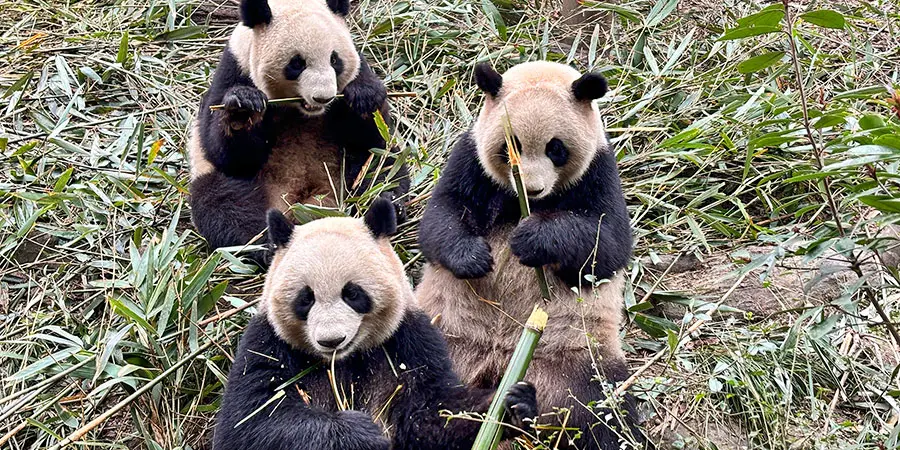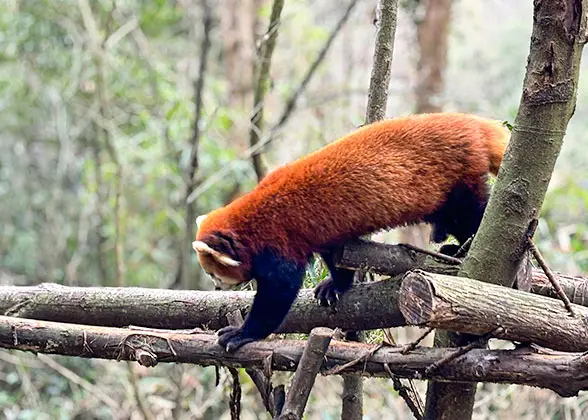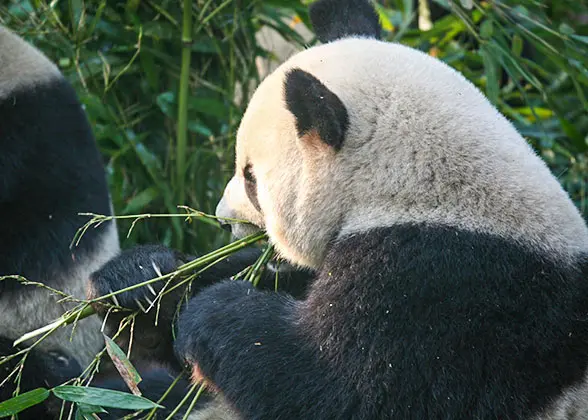Dujiangyan Panda Valley
Located 60 kilometers (37 miles) from Chengdu, Panda Valley is in the Baima Village, Yutang Town, Dujiangyan City. The whole valley covers an area of 1.34 square kilometers (331 acres). Dujiangyan Panda Valley is organised in such a way that that giant pandas are encouraged to return to the wild.
In the Dujiangyan Panda Valley, the giant pandas are gradually reintroduced to the wild. During the semi-original wildness transition experiment, they temporarily live in dens that look like blockhouses. They will continue receiving training to complete this transitional stage until the researchers confirm they have the ability to return to the wild. |
The first batch of the residents, Xingrong, Xingya, Gongzai, Yingying, Zhizhi, Qiqi, moved into Dujiangyan Panda Valley on January 11th, 2012. They all possess their own characteristics. Xingrong and Xingya are twins; Yingying likes playing and resting in a tree; Zhizhi is very active and Qiqi looks quite pretty. A lot of people may already have heard of Gongzai: being the prototype for the animated film Kung Fu Panda 2, he is the star of the whole valley. Gongzai is very outgoing and strong for his age. Chengdu Panda Base spent nearly one year selecting them from 108 giant pandas in the various aspects of genealogy, health, genetic background, gender matching, etc. At sub-adult age, which is equivalent to human childhood, their growth is rapid and their ability to adapt to a new environment is very strong.
|
|
How to get to Dujiangyan Panda Valley from Chengdu
2. Take a direct tourist bus from Chunxi Rd. to get the valley directly. The ticket for a round trip is CNY63.
| Entrance Fee | CNY 55 Free of charge for children under 1.3 meters (4.3 feet) and the old over 60. |
|---|---|
| Opening Hours | May - October: 7:50 - 17:30 November - April: 08:10-17:00 |
Note: Volunteer program is not available in the Panda Valley. If you want to join a volunteer program or take photos with pandas, you can go to the Dujiangyan Panda Base which is 19 km (11 miles) from the valley.
Challenges to Release Giant Pandas to the Wild
First, giant pandas may lack viability in the wild. The release of giant pandas to the wild has high requirements on their environmental adaptability, behavior, health, heredity, etc. After more than 20 years of development, Chengdu has bred five generations of giant pandas. This is by far the largest captive giant panda group with the most generations in world. That is to say these giant pandas have been separated from the wild for a long time and their adaptability and survival ability in the wild need to be observed.
|
|
Second, the lack of scientific data, systematic research and diseases control on the released pandas. Although giant pandas have been released in the past, is has not been successful completely. At present, scientific and systematic research is still going on. At the same time, there are many challenges to protect the released pandas from epidemic and zoonotic diseases.
Third, this task requires the state to provide financial and policy support because it is a complicated and systematic scientific project to study the release of wild animals.
Facts Growing Process Diplomacy FAQs



